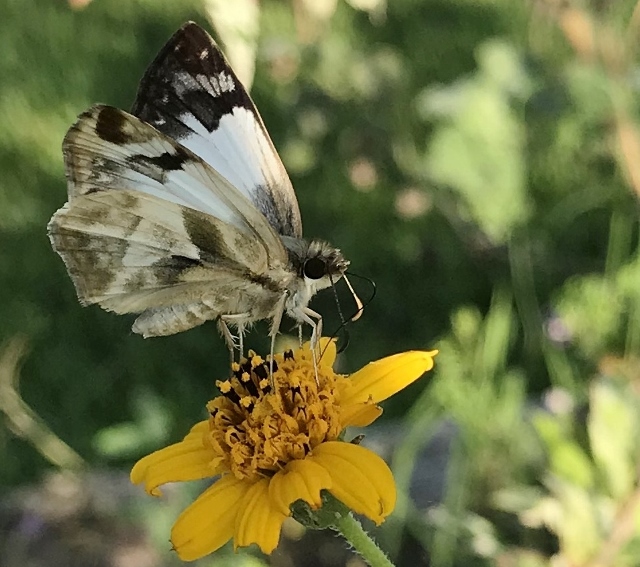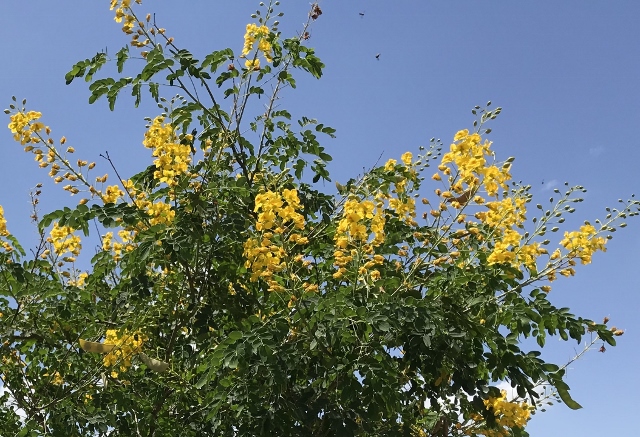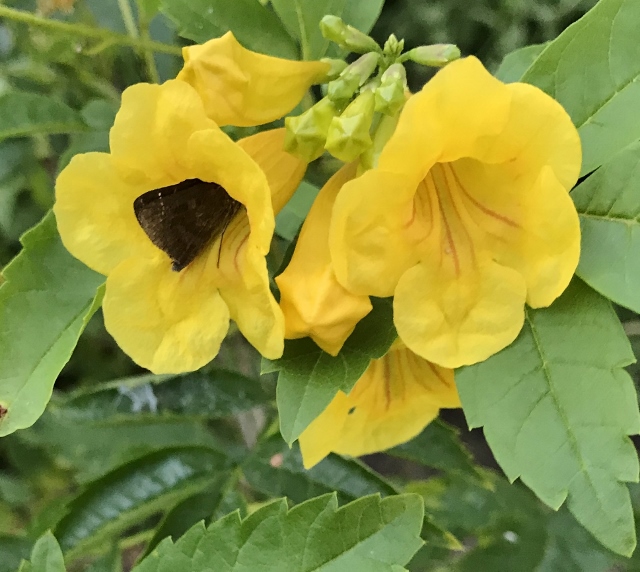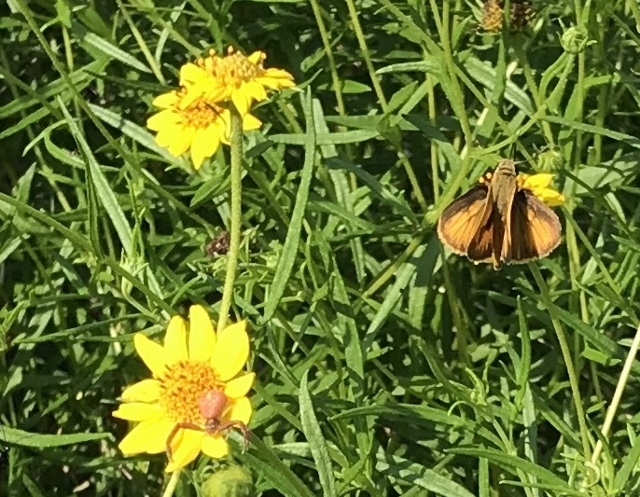Story and photos by Anita Westervelt, Texas Master Naturalist

A yellow garden is full of sunshine — and butterflies, bees and hummingbirds!
An important aspect of a butterfly garden is to have something blooming year-round so butterflies visit longer. Color variety is important, too, but let’s hear it for the yellows. Four native, nectar-rich, butterfly-attracting plants that thrive in full sun are presented below in descending order of potential height.
Mexican caesalpinia, Caesalpinia Mexicana, is a somewhat slow-growing, small tree in the pea-family, but can grow to six to eight feet within a couple of years, depending on the soil; mature trees can reach upwards of 15 feet. This tree is a plentiful bloomer producing tight little spires of yellow flowers several times a year. It is one of the Valley’s plants that will bloom after a rain.

The flowers turn into hundreds of three-inch long green pea-pods that soon turn a golden wheat color. When mature, dried pods twist open with an audible pop and rocket seeds around the mother plant. Seeds propagate easily. New starts can be potted up when they are between 12 and 18 inches — dig deep to keep the taproot intact — or leave the volunteer plants to grow and form a grouping. Young trees bend with the wind if not staked.
Esperanza, Tecoma stans, has its banner blooming seasons beginning in early fall and lasting through the winter bringing butterflies, bees and hummingbirds to the vibrant clusters of bell-shaped flowers. This is a shrub for a park community butterfly garden as it can easily grow to eight feet tall with a hefty girth. It is drought tolerant although a weekly soaking during summer is advised. It requires well-draining soil.

Esperanza is a larval host to dogface butterflies and the plebeian sphinx moth, both of whose caterpillars will feed on the leaves but not harm the plant.
Both caesalpinia and esperanza can be left to grow as they desire or pruned into a tree shape by removing lower foliage and branches — a strategy that opens the understory for other plants like skeleton leaf golden eye or hairy wedelia.
Skeleton leaf golden eye, Viguiera stenoloba, begins blooming profusely in fall and into the winter attracting butterflies, bees and other pollinators. The shrub grows to three feet in height and forms a well-rounded dense mound covered in yellow daisy-like blooms. Seed pods turn dark brown and are a treat for seed-eating birds. Although drought tolerant, shearing off six inches of dead blooms and watering will keep it blooming. A row of skeleton leaf golden eye makes an excellent border. This plant easily self-propagates.

Hairy wedelia, Wedelia acapulcensis [Zexmenia hispida], is worth looking for through local native plant growers. This low-growing small shrub can get as tall as 18 inches and fill out to a neat spread nearly three feet in circumference. It blooms spring through winter. After the blooms fade at the end of winter, cut it back to promote regrowth. Hairy wedelia is a larval host to bordered patch butterflies.
For a list of local native plant growers visit: https://rgvctmn.org/rgv-plants/

Leave a Reply